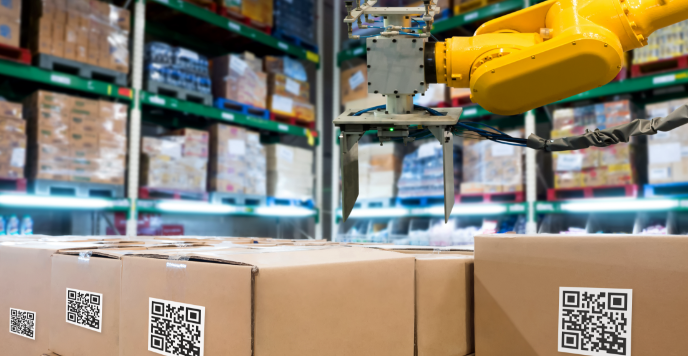Digital transformation is heralding the next phase in supply chain management, blurring the lines between the digital and physical worlds and wiping out the traditional organizational boundaries. Supply chain is at the cusp of disruption with the latest technologies and practices, ensuring greater efficiency in business processes, operations, transparency, and security.
According to Gartner, 50% of large global supply chain companies are estimated to adopt the latest technologies, like artificial intelligence, advanced analytics, and IoT by 2023, allowing new ways of doing business across retail, manufacturing, distribution, and logistics industries.
Here is a list of ways in which digital transformation is reconstructing the traditional supply chain:
Spend Analysis:
Spend analysis in strategic sourcing must take a shift from the traditional descriptive analytics model to more advanced predictive analytics. Analysts can apply statistical algorithms and machine learning techniques to historical data to produce probabilities and forecasts. Supply chain companies can analyze real-time data from warehouse, transportation, and logistics, turning the data into a powerhouse of information and insight. This credible data can be used to recognize the need to reinvent the objectives of spend analysis, implementing course correction where necessary.
Help organizations curb expenditure under various heads.
Mitigate market risks, potential frauds, and exempt loss with analytics tools.
Redefine and analyze procurement data for insights and more business value

Supplier Lifecycle Management:
When augmented by big data, the traditional supplier lifecycle management platform can offer meaningful information on suppliers and supply chain risks. Many procurement leaders might be dealing with the challenges of reconciling fragmented and inconsistent information to understand supplier performance and vendor relationships. Supply chain companies can employ an IoT solution to track the quality of the product at various stages of the supply chain, thus improving efficiency in the process and providing metrics for supplier evaluation. The sensors within IoT devices can help measure location, movement, temperature, humidity, and many other factors.
Improve supply chain at all stages of the supply chain
Reduce the need for predictive maintenance to prevent downtime
Advance inventory with IoT asset tracking

Contract Management:
Trust building between Original Equipment Manufacturers (OEMs) and suppliers is the glue that holds the entire supply chain together. Inefficient contracting can cause inadvertent losses to business, and one of the biggest challenges in contracting is to track compliance and obligations. A comprehensive SaaS-based platform can help facilitate greater efficiency in compliance and obligation management. AI can help develop smart wizards to build contracts based on specific questions, helping identify changes to standard clauses with pattern recognition. Blockchains are immutable, and therefore it may be possible to eliminate the need for electronic signatures soon.
Use of advanced ML algorithms for contract data extraction from legacy contracts
Ensure compliance with all relevant terms and clauses, even for third-party contracts
Process third-party contracts faster while lowering risk and enhancing contract performance

Logistics:
Supply chain companies are looking to connect IoT technologies to their traditional logistics systems. An IoT-enabled fleet vehicle can indeed generate vast amounts of data, such as engine status, driver behavior, storage temperature, delivery routes, real-time freight tracking, and more. A recent example is a global IBM and Maersk joint blockchain venture, recognizing the potential and digitizing their international trade and supply chains. According to World Economic Forum, 50% of trucks travel empty on their return journey after making a delivery – the digital transformation can bring substantial social and environmental benefits by improving efficiency and cutting down energy consumption and emissions.
Improvement in shipment, retention, and delivery of the product
Provide hyper-correctness in transport and logistics
Enhanced security to minimize risks and interruption

Order Management:
Order management’s traditional ecosystem system plays a crucial role in organizing and facilitating the order fulfillment process. With Al-powered automation, supply chain companies help control costs and generate revenue by automating manual processes and reducing errors. This platform helps drive greater efficiency in orchestrating and streamlining purchase orders, shipment details, trade documents, goods receipts, and more. On the other hand, advanced analytics can help facilitate visibility across the entire supply chain ecosystem, sending alerts whenever there is a disruption.
Optimize inventory control by removing the complexity of data volumes
Automatically orders the correct number of raw materials to fulfill manufacturing orders
Demand prediction for better inventory control







